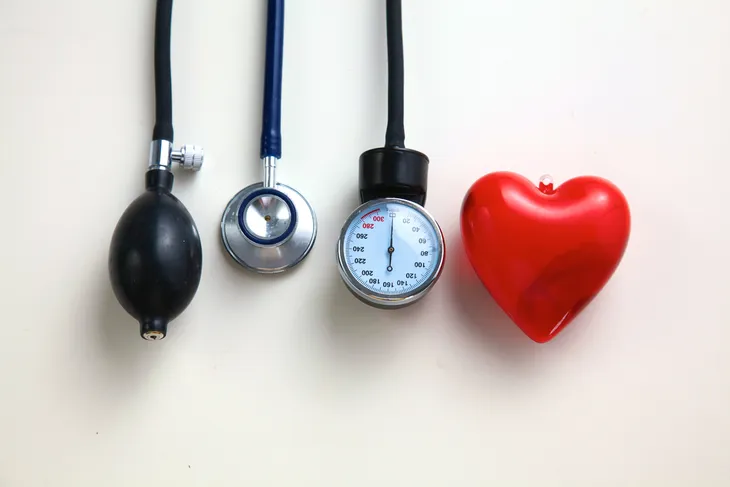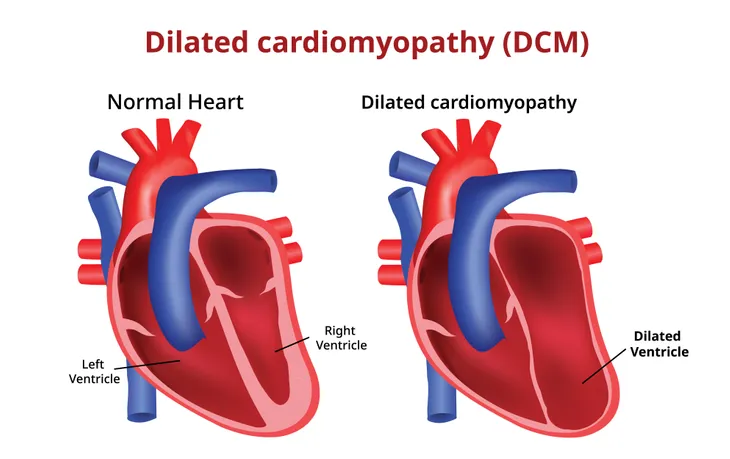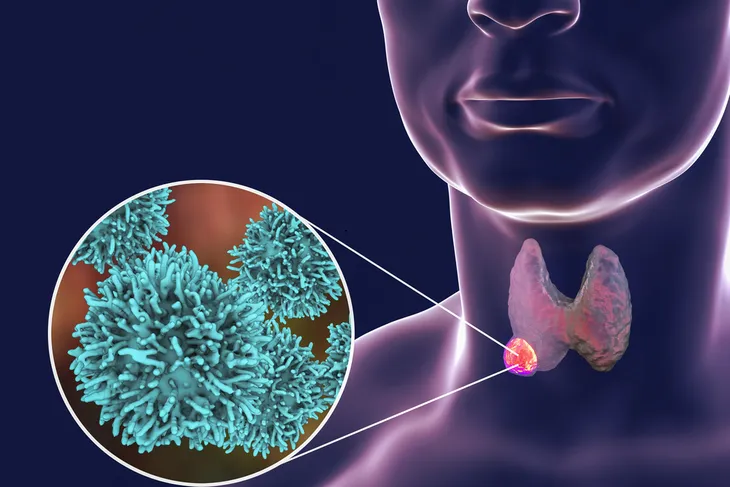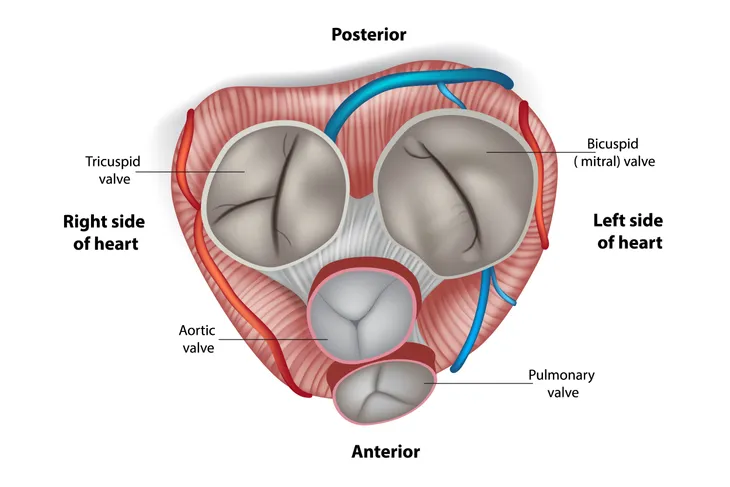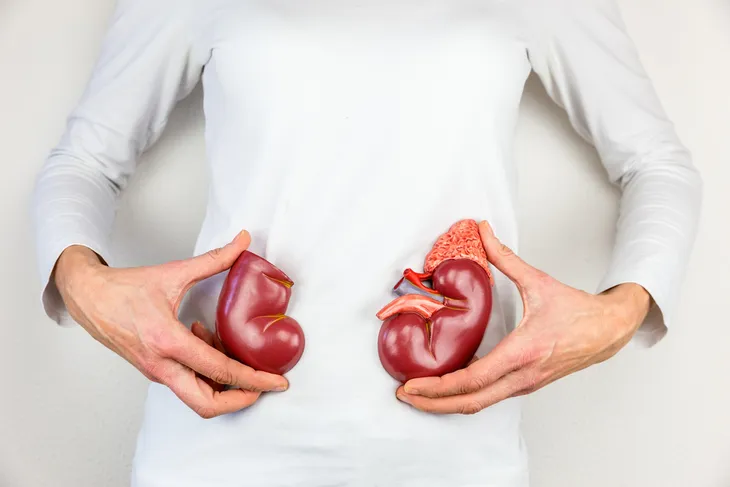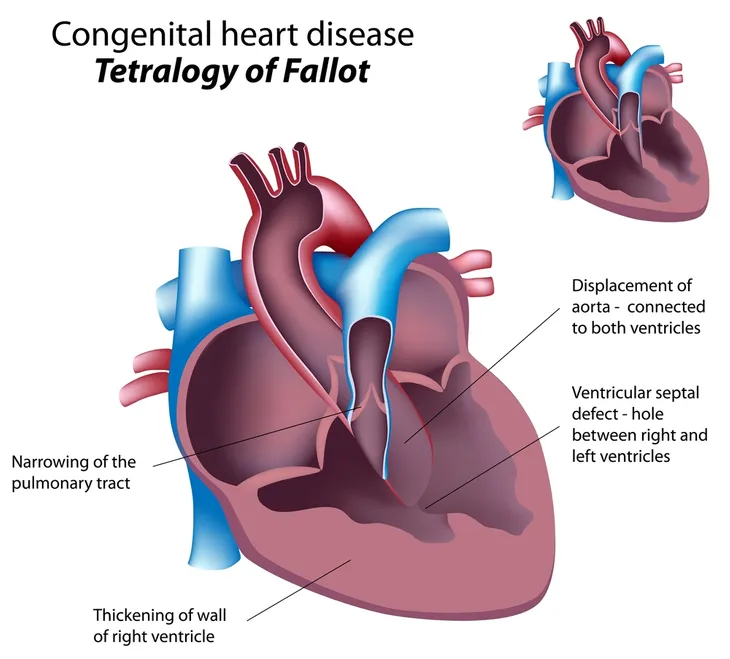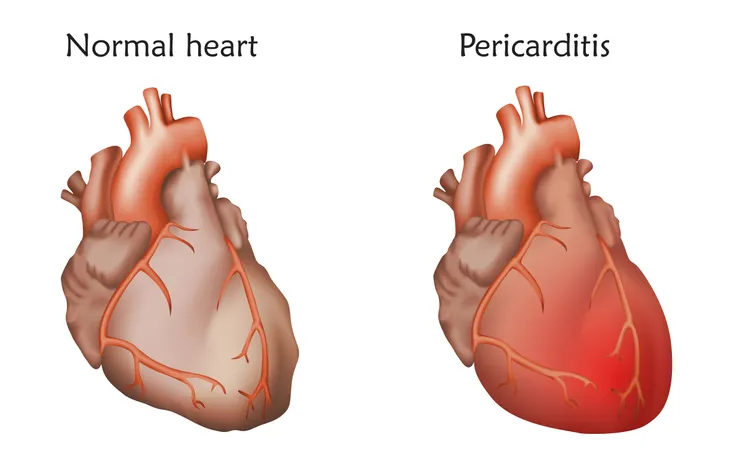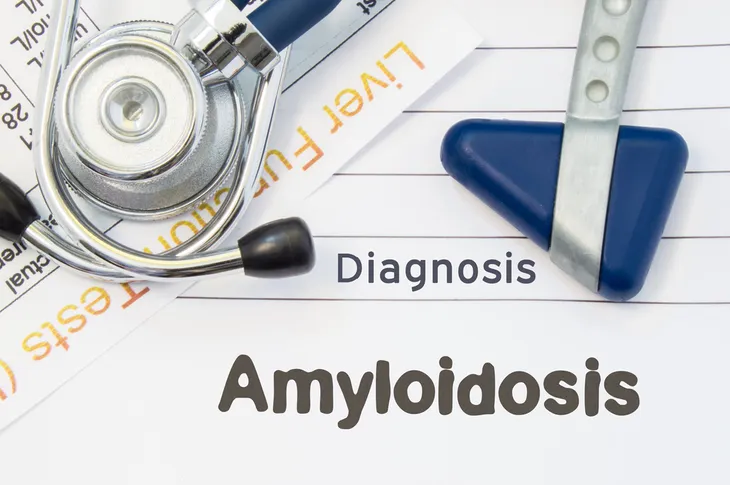Heart failure refers to a condition in which the heart cannot pump enough blood to meet the body’s metabolic needs. It is often referred to as congestive heart failure, or CHF. Heart failure is a common clinical syndrome characterized by shortness of breath, fatigue, and swelling (edema) in the legs, ankles, and feet. It can be left-sided (most commonly) or right-sided. Left-sided heart failure can be the result of systolic (heart contraction) or diastolic (heart relaxation) dysfunction. Heart failure is a chronic condition characterized by acute exacerbations, or periods of abrupt worsening of symptoms.
Twelve causes of heart failure include…
1. Coronary Artery Disease
Coronary artery disease (CAD) is characterized by the accumulation of fatty plaques in the walls of heart arteries. It is often simply referred to as heart disease. Cardiac ischemia develops when a fatty plaque blocks the blood flow to heart muscle. If ischemia lasts long enough, the death of heart muscle ensues, which is referred to as a heart attack (myocardial infarction). An individual experiencing a heart attack may or may not have chest pain, or angina.
A heart attack results in a scarred area that does not function properly. There is no single diagnostic test for CAD, which is the leading cause of death in the US in both men and women. Risk factors for the development of CAD include high blood cholesterol (especially LDL or “bad” cholesterol), high blood pressure, diabetes, smoking, being overweight or obese, and a family history of heart disease.
2. Hypertension
Hypertension, or high blood pressure, refers to elevated pressures in the blood flowing through the arteries of the body. Blood pressure is highest when the heart is contracting, and gives rise to the systolic blood pressure (SBP). The heart relaxes between beats causing the blood pressure to fall and gives rise to the diastolic blood pressure (DBP). The SBP is the top number, while the DBP is the bottom number. The units of measurement are millimeters of mercury (mm Hg).
A normal BP is less than 120/80 mm Hg. If an individual is younger than age 60, hypertension is defined as a blood pressure greater than 140/90 mm Hg. If an individual is older than age 60, it is defined as a blood pressure greater than 150/90 mm Hg. Generally, hypertension has no symptoms. Many guidelines exist for the treatment of hypertension. Individuals with hypertension are two to three times more likely to develop CHF.
3. Dilated Cardiomyopathy
Dilated cardiomyopathy is a progressive disease of heart muscle. The heart has two upper chambers, the atria, and two bottom chambers, the ventricles. Dilated cardiomyopathy is characterized by ventricular enlargement. It is the third most common cause of heart failure and the most frequent reason for heart transplantation. The other two classes of cardiomyopathy are hypertrophic and restrictive. Progressive enlargement of the ventricles leads to increasing cardiac dysfunction resulting in heart failure.
There are many causes of dilated cardiomyopathy, but the top three are genetic inheritance, infections, and toxins. Blood pressure control is crucial to the effective treatment of dilated cardiomyopathy. Dietary recommendations include water and sodium restriction. Anticoagulants, or blood thinners, may be used in the treatment of selected patients. If heart failure progresses despite maximal medical therapy, consideration should be given to evaluation for heart transplantation.
4. Thyroid Disease
The thyroid is a butterfly-shaped gland in the front of the neck just below the Adam’s apple and above the collarbone (clavicle). The gland has two lobes connected by an isthmus, or bridge, in the middle. Normally, the thyroid cannot be palpated (felt by touch). It is one of endocrine glands, which secrete hormones. The thyroid primarily secretes the hormone thyroxine, also called T4, which controls the body’s metabolism.
Hyperthyroidism is characterized by excessive T4 production. Symptoms of hyperthyroidism may include goiter (enlarged thyroid), nervousness, weight loss, rapid heartbeat, and heat intolerance. Hypothyroidism is characterized by decreased T4 production. Symptoms of hypothyroidism may include dry skin, weight gain, bradycardia (slow heart rate), constipation, hoarse voice, brittle hair, and cold intolerance. Radioactive iodine is the most common treatment for hyperthyroidism. Replacement therapy is the most common treatment for hypothyroidism. Oral replacement agents include levothyroxine (SynthroidTM) and armour thyroid.
5. Heart Valve Disease
According to the American Heart Association (AHA), nearly five million Americans are diagnosed with heart valve disease each year. The heart contains four valves coordinating blood flow in and out of its four chambers. The valves are tricuspid (lies between right atrium and right ventricle), mitral (lies between left atrium and left ventricle), pulmonary (lies between right ventricle and pulmonary artery), and aortic (lies between left ventricle and aorta). Heart valves usually do not permit backward leakage of blood.
In general, there are two types of heart valve disease—stenosis and insufficiency. Heart valve stenosis refers to the narrowing of a heart valve, while insufficiency describes a heart valve that does not close tightly and allows blood to leak backwards. Heart valve insufficiency is also called regurgitation or incompetence. Heart valve disease can be congenital (developing before birth) or acquired during an individual’s lifetime. It is best diagnosed via an echocardiogram (a test using ultrasound to evaluate heart muscle and valves).
6. Kidney Disease
The kidneys are two organs located outside of the abdomen, in the middle of the back just above the waist. They filter wastes and extra water from the blood to make urine. The process takes place in structures called nephrons. The kidneys also play a role in controlling blood pressure and maintaining the balance of salt and minerals in the blood. The National Institute of Diabetes and Digestive and Kidney Diseases estimates more than 20-million Americans may have kidney disease.
Diabetes and hypertension are the most common causes of kidney disease. Early kidney disease has no symptoms. Kidney disease can be acute (short-lived) or chronic (lasting longer than three months). Both can lead to kidney failure. There is a strong association between CHF and chronic kidney disease (25-percent of individuals with kidney disease also have CHF). No one knows the particular mechanism by which kidney disease leads to heart failure.
7. Diabetes
Diabetes is a chronic disease characterized by hyperglycemia, or elevated levels of glucose in the blood. It is the result of an absence or deficiency of insulin, which leads to hyperglycemia. Insulin is a hormone secreted by the pancreas and works to lower blood glucose (sugar) levels. There are two types of diabetes—type 1 (no insulin production) and type 2 (insulin resistance). Type 2 diabetes is more common. There is no cure for diabetes.
A fasting blood sugar can be used to diagnose diabetes. A hemoglobin A1C is a blood test that measures the average blood sugar of a diabetic over the past three months. The A1C can be used to monitor response to treatment with a goal being less than seven percent. Diabetes can damage an individual’s eyes, kidneys, and nerves. It can also cause heart disease, which is its indirect contribution to the etiology of heart failure.
8. Congenital Heart Defects
Congenital heart defects, also referred to as congenital heart disease, refer to problems with the heart’s structure present at birth. These defects may involve the heart’s walls or valves or arteries or veins carrying blood to the heart or body. Typically, they change the normal flow of blood through the heart. Congenital heart defects are the most common birth defect and the most common cause of infant death due to birth defect. There are at least 35-types of congenital heart defects.
Many congenital heart defects cause no sign or symptoms, while others do cause signs and symptoms. Examples include holes in the heart (septal defects) and patent ductus arteriosus. Other defects may involve stenosis, atresia, or regurgitation of heart valves. The most common valve defect is pulmonary valve stenosis, which is characterized by narrowing of the pulmonary valve. Complex heart defects require surgical repair and an example is tetralogy of Fallot, the most common complex heart defect.
9. Myocarditis
Myocarditis refers to inflammation of the myocardium, the muscular middle layer of the heart. There are numerous potential causes of myocarditis. According to the Myocarditis Foundation, viral infections are one of the most common causes of myocarditis. Viruses capable of causing myocarditis include coxsackie B, Epstein-Barr, hepatitis C, herpes, and human immunodeficiency (HIV). Approximately 50-percent of the time, myocarditis is classified as idiopathic, or without a known cause. Most individuals diagnosed with myocarditis do not have any long-term effects on their heart.
Myocarditis often has no symptoms. It may damage an individual’s heart muscle to the point it can no longer effectively pump blood, which is commonly referred to as heart failure. Medications used to help the heart work more efficiently include ACE inhibitors, calcium channel blockers, and diuretics. Other complications of myocarditis may include heart attack (myocardial infarction), stroke (cerebrovascular accident, or CVA), arrhythmias (abnormal heart rhythms), and sudden death.
10. Pericarditis
Pericarditis refers to inflammation of the pericardium, the membrane surrounding the heart. The most common cause of pericarditis is viral infection with pathogens such as coxsackie B virus, adenovirus, influenza A and B viruses, and Epstein-Barr virus. Other causes include heart attack, trauma, recent heart surgery, tuberculosis, and certain medications. Pericarditis can be acute (lasting a short period of time) or chronic (lasting a long period of time). Chronic pericarditis is usually attributed to autoimmune disorders such as lupus, scleroderma, or rheumatoid arthritis.
The most common symptom of pericarditis is sharp chest pain, which may radiate into the shoulder. Other symptoms may include fever, cough, tachycardia (fast heart rate), and fatigue. Treatment of pericarditis involves anti-inflammatory agents such as colchicine or corticosteroids. A potentially life threatening complication of pericarditis is cardiac tamponade. It can be treated with pericardiocentesis, which is surgical puncture to remove excess fluid from the cavity surrounding the heart.
11. Hemochromatosis
Hemochromatosis is a genetic disorder characterized by the abnormal accumulation of iron in the body. The excess iron is stored in organs such as the liver, heart, and pancreas. There is no natural way to get rid of the excess iron, which becomes toxic to the body’s organs. Hemochromatosis is the most common autosomal recessive genetic disorder. An autosomal recessive genetic disorder requires two copies of an abnormal gene be present in order for the disease to develop.
Hemochromatosis may be primary or secondary. Primary hemochromatosis is inherited, while secondary hemochromatosis is usually the result of a disease such as anemia or thalassemia or blood transfusions. Potential complications of hemochromatosis may include CHF, diabetes, liver cirrhosis, liver cancer, thyroid disease, and impotence. Serial phlebotomy, or removal of blood, is a safe and efficient method of removing excess iron. Chelation therapy is an option in those individuals who do poorly with serial phlebotomy.
12. Amyloidosis
Amyloidosis is a rare disease characterized by the deposition of amyloid in the body’s tissues and organs, which causes dysfunction. Amyloid is an abnormal protein produced in the bone marrow that can be deposited in any tissue or organ. Frequently affected organs include the heart, kidneys, liver, lungs, and spleen. Amyloidosis can localized or systemic. It can also be primary (its own entity) or secondary (a byproduct of another illness).
Early amyloidosis usually has no symptoms. A biopsy (a sample of tissue obtained from the body and viewed under a microscope) of the involved tissue is needed to confirm a diagnosis of amyloidosis. There is no cure for amyloidosis. Severe amyloidosis can lead to life threatening organ failure. Treatment of amyloidosis may involve chemotherapy (usually used in the treatment of cancer) and anti-inflammatory medication such as the steroid dexamethasone.


